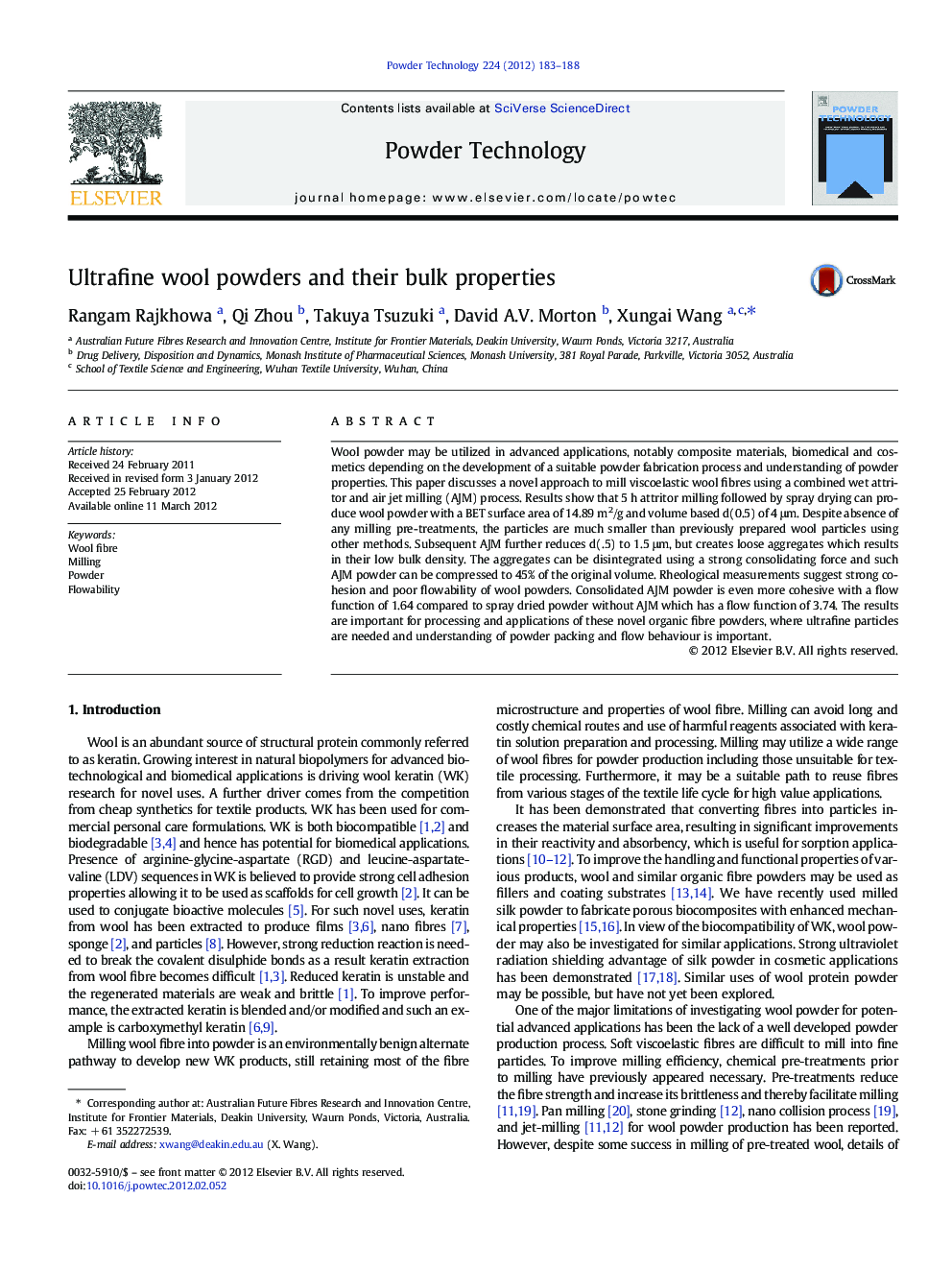| Article ID | Journal | Published Year | Pages | File Type |
|---|---|---|---|---|
| 237174 | Powder Technology | 2012 | 6 Pages |
Wool powder may be utilized in advanced applications, notably composite materials, biomedical and cosmetics depending on the development of a suitable powder fabrication process and understanding of powder properties. This paper discusses a novel approach to mill viscoelastic wool fibres using a combined wet attritor and air jet milling (AJM) process. Results show that 5 h attritor milling followed by spray drying can produce wool powder with a BET surface area of 14.89 m2/g and volume based d(0.5) of 4 μm. Despite absence of any milling pre-treatments, the particles are much smaller than previously prepared wool particles using other methods. Subsequent AJM further reduces d(.5) to 1.5 μm, but creates loose aggregates which results in their low bulk density. The aggregates can be disintegrated using a strong consolidating force and such AJM powder can be compressed to 45% of the original volume. Rheological measurements suggest strong cohesion and poor flowability of wool powders. Consolidated AJM powder is even more cohesive with a flow function of 1.64 compared to spray dried powder without AJM which has a flow function of 3.74. The results are important for processing and applications of these novel organic fibre powders, where ultrafine particles are needed and understanding of powder packing and flow behaviour is important.
Graphical abstractSoft viscoelastic wool fibres are difficult to mill into fine particles without any chemical treatment and appreciable degradation. In this work, we have used wet attritor milling-spray drying – air jet milling to prepare ultrafine wool powder with a BET surface area of 16.47 m2/g from untreated wool fibres. Wool powder bulk properties such as density, compressibility, cohesiveness and flow index were measured to gain new insight into how powder properties change during milling.Figure optionsDownload full-size imageDownload as PowerPoint slideHighlights► Ultrafine wool powder has been fabricated without any pre treatment. ► Particles are finer than previously reported, with macrofibrils of wool exposed. ► For the first time, bulk properties of wool powder have been characterised. ► New insight into how flow properties of wool powder change during milling.
